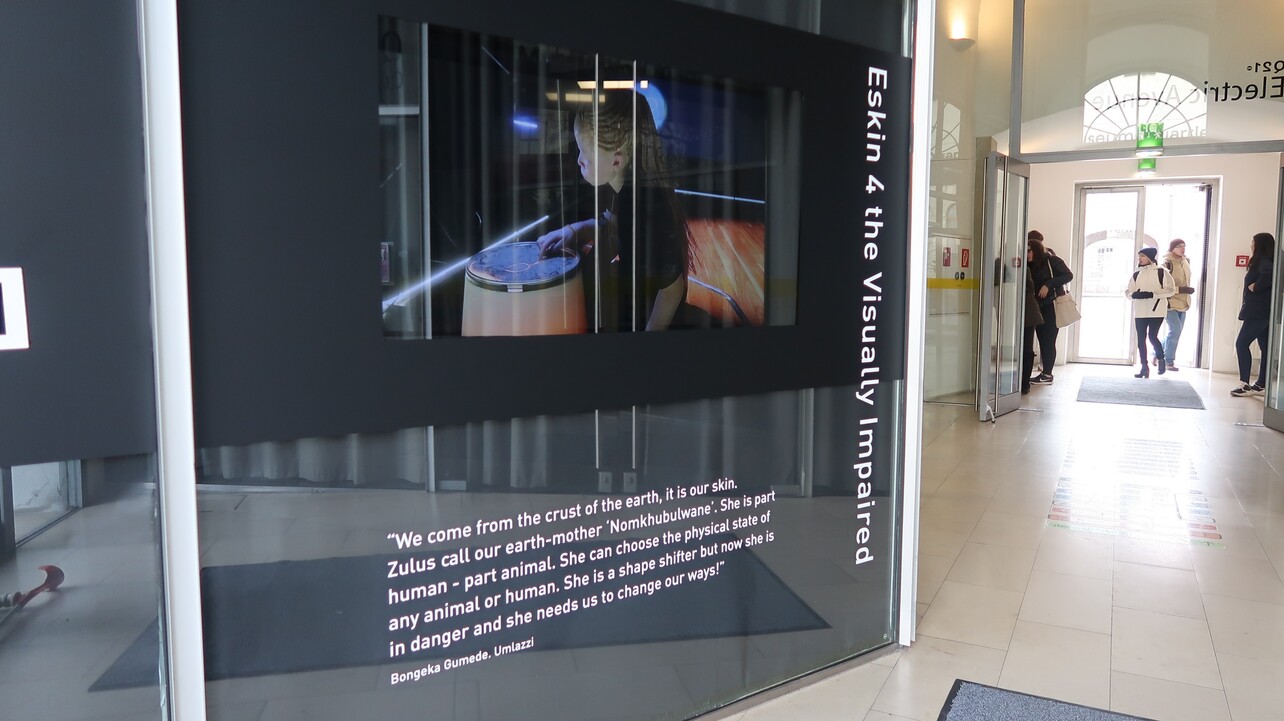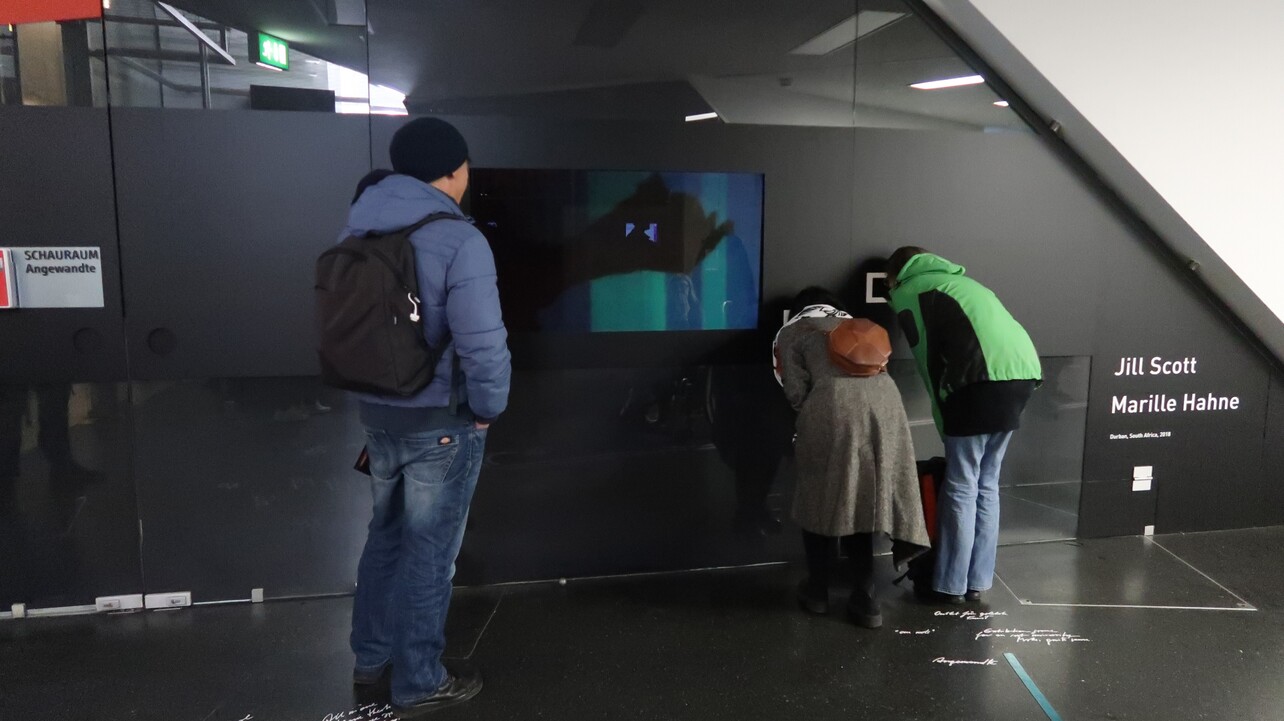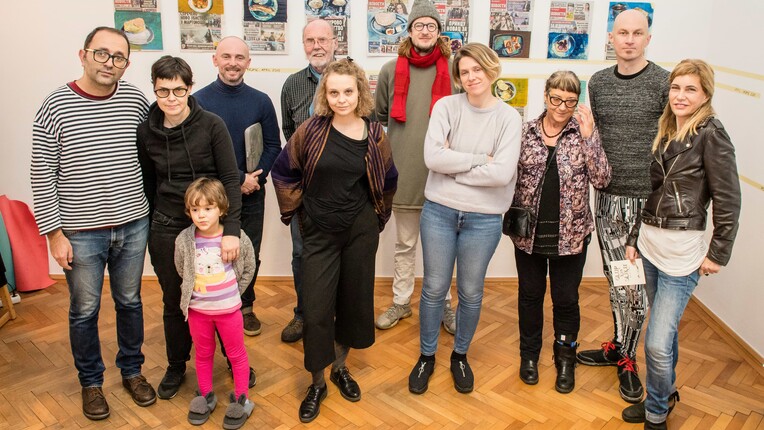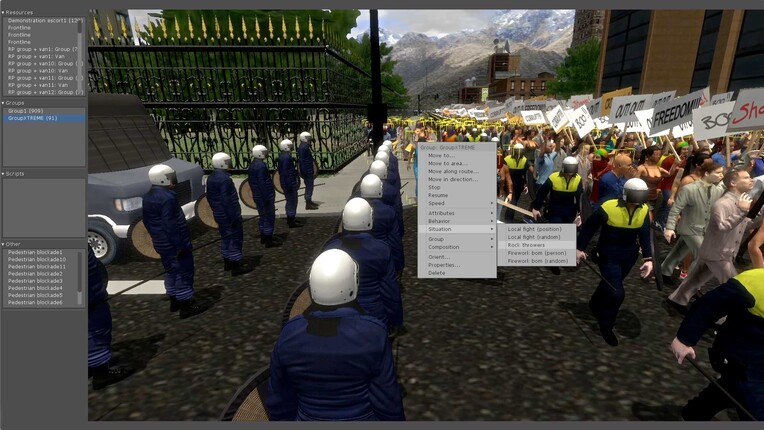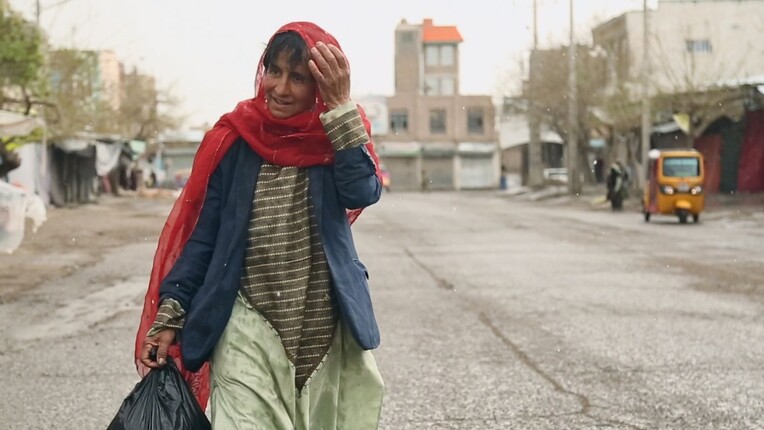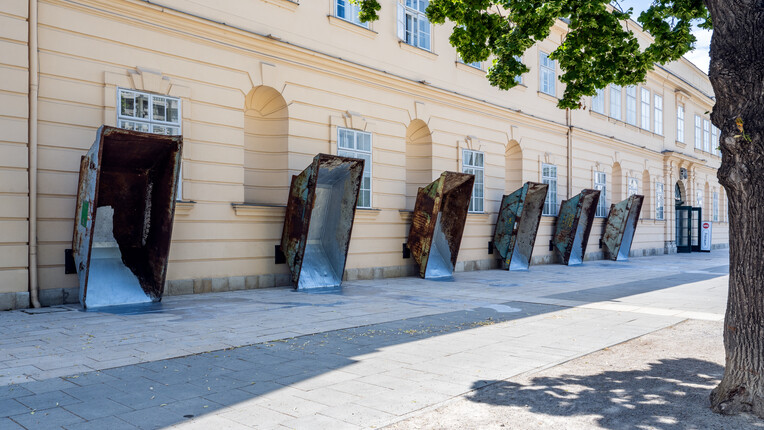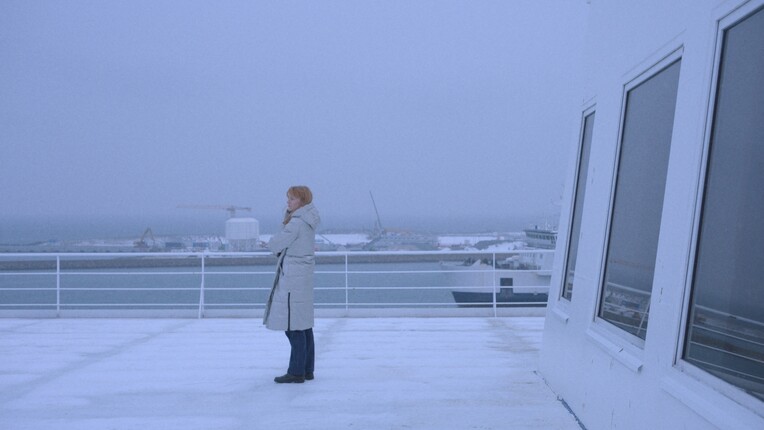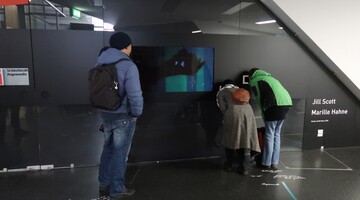
Jill Scott: Eskin 4 the Visually Impaired
Australian-Swiss Media Artist Jill Scott interviewed by Veronika Schnell from the University of Applied Arts, Department DIGITALE KUNST, Wien.
You were an Artist-in-Residence at the MuseumsQuartier in November 2018. Can you briefly explain the work that you made here, in Vienna.
I had a very productive time in this residency. Together with filmmaker Marille Hahne, we conducted a “Neuromedia” workshop on sensory perception at the Digital Art Department at the Universität für angewandte Kunst. This workshop was called: “Enhancing Sensory Perception for Artist and Designers”. It focused on the stimulation of three neural systems, the Peripheral Nervous System (PNS), the Central Nervous System (CNS) and the Automated Nervous System. The aim was to help the participating artists and designers to think differently about sensory stimuli past old fashioned interaction ideas of cause and effect, and to understand cross-modal sensory interaction. We also made an exhibition here in the Schauraum, based on the documentation of Eskin4 the Visually Impaired, a recent project from Durban, South Africa. This exhibition is still on and it is showing how a trans-disciplinary media art platform can enable visually impaired participants to become performers alongside their own contents and local ecological stories. This project was inspired by current research in neuroscience and ecology and the films from this project can also be seen on www.jillscott.org/artwork/current_eskin4.html.
What methods do you use to go about your artistic research? Can you explain your processes of making media art?
Like many artists I believe that we are filters of our own personal experience. A great deal of interesting art comes out of first hand experience and my experience happens to be scientific research about life forms and the way we think. Therefore, I immerse myself in scientific fields where I am “the outsider”, then after have some “Ah Ah moments” on the content level, I formulate the idea, look for experts to consult with and form a media team (software and hardware people) to collaborate with. At this point I try to find the right new technology to use for the interaction. I always believed that the media art tools should be chosen to match the content and not be the driving force of the project. Then I draw out the idea or write the performative script or map out the interactive scenarios, and then I work with my team to try to build it. Sometimes artists or scientists come into my studio to test out the results and give me feedback. However, my final project is closely related to my original concept.
How did you get into the field of art and science?
I was always interested in the human body and biology. I got into art and science by thinking about body politics and the way that the digital, molecular and mechanical representation of us changes our concepts of the human body and effects our cognitive behavior. I made series of works in interactive cinema formats where you could talk to virtual characters about the relations between their idealism and their behavior. (see FRONTIERS OF UTOPIA, 1995) After this, I became concerned about the “nature verses nurture” debate, which led me into the controversies around genetic inheritance and the evolution of our species. I spent some time collaborating with AI scientists who question the potentials of neural networks and bio-mimicry, as well as with Environmental scientists who work with climate change models. For the last 16 years I have had hands-on access to neuroscience labs, where I have been immersed in the way sensory perception works and how our perception of our environment is affected by differences in education. There is a great deal of curious and inspiring research in science about all these topics. Once you start learning you cannot stop. The challenge is to extract meaningful parts from all this complexity and try to transport them into poetic analogies and create metaphors that reach out to the public.
Can you explain the relationship of art and science in your work?
Sensory perception lies at the hearts of both, art and neuroscience research. My work is about trying to bring art and neuroscience into the same room. I am also interested in the environmental effects on the body so ecology is my third interest. The ecologists say that they are more holistic than the neuroscientists, and the neuroscientists say they need reductionism to understand behavior. I am often inspired by reductionism, especially in relation to shape and form. For example, I find the 2 D images of the inner ear stereocilia from the Scanning Electron Microscope absolutely powerful. I believe that microscopic images of our body parts are linked to the extension of cinema and even see these images as bio-portraits (see AURALROOTS, 2015). I see myself as a catalyst and my adventures into science as bio-mimicry adventures. The only thing I am worried about is pseudo science. Both art and science sufferer from this kind of miss-information. I strive for my work to be scientifically accurate and to be poetic at the same time.
Concerning your processes of collaboration with technicians and filmmakers, can you explain how these teams are formed?
My collaborations with technicians often change. However, I have some favorite software programmers. Over many years of production, I have only worked with three programmers, Jens Mueller, Andreas Schiffler and Nik Voelzow. I like my own role to that of a writer, director, builder, designer and so, for the other parts of my project, I often need new team members. This is typical of media art teams and DIY groups today. The days of the “lonely hermit” in the studio waiting to be discovered are over and I do not want to compete in the commercial art world, nor design goods for society. For the last 23 years, I have worked with filmmaker-researcher Marille Hahne to document my artwork. Here, our approach is always to reveal the process of production of the artwork with interviews and science reports.
We know that the notion of "artistic research" is currently questioned by many artists. Do you think that it is a term that is only relevant in academic fields?
I would call myself an art-researcher. It is not a trajectory for everyone, although I think that every artist has to deal with the relationship between subjective and objective information. Its extremely challenging to try to do both but worth trying. I think that academic research is valuable in that it makes you contextualize your own practice and reflect deeply on your processes of production. It also teaches you to see writing as a creative voice. I don’t think every artist “has to” do a PhD, but they might want to and should be encouraged to do so. Some artists decide their work is more emotional and want to take a provocative stand or make more ambiguous statements. But I am more interested in the power of an artwork to express very relevant messages and experiences for society and its problems. So I belong to this group of art-researchers who aim to raise awareness, investigate changes in our behavior or wake people up. Perhaps some questions against artistic-research come from older-post modern abstraction approaches.
I know that you have worked for many years as a professor and as a PhD supervisor for art in academic fields. What advice would you give to young female artists who want to follow in your footsteps?
My advice for young female art researcher is to realize that their knowledge is new knowledge. For centuries academic research has been dominated by men. Fight for your rights to make yourself heard and for equal rights! Your perspective is necessary! I have graduated 16 PhD art students as a first supervisor. My guidance for all my students was the following: “Fall I love with your investigations and follow your intuition and keep curious enough to make the most out of the results! Know when to stop, be open to brave associations and try to also work with other audiences than the ones you know!” I am a strong believer in publications but also in public discourse and community trust, because peer to peer support is essential. And I am very happy to see an increase of female art researchers in the art/science community.
How conflicting is it to be an artist and also at the same time have a career in academic institutions?
Its not conflicting at all. If you want to stay experimental then keep your academic job or institutional access. If you care about human rights then join an NGO or a DIY group. If you want to stay in the commercial art world then tailor your work to fashion and sales. I am not putting down any of these attitudes or other in-between points here. It was just clear for me: I wanted to stay experimental and engage in a lively context for my work and so I became an academic and I appreciate intergenerational exchanges.
(all works mentions can be seen on the web site of Jill Scott www.jillscott.org under current projects. This includes video documentaries about them)
